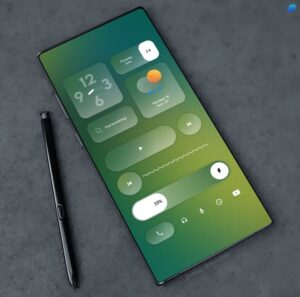Avoid the Flagship Trap: Why You Shouldn’t Buy a Flagship Phone in 2025
Why You Shouldn’t Buy a Flagship Phone in 2025
Flagship smartphones have long been considered the pinnacle of mobile technology. Every year, companies like Apple, Samsung, and Google launch their latest and greatest devices, packed with high-end features, powerful cameras, and premium designs. But do you really need one? The truth is, buying a flagship phone in 2025 might not be the smartest choice. Here’s why:
1. Overpriced for Minimal Upgrades
Flagship phones now cost anywhere from $1,000 to $1,500 or more. Yet, year after year, the upgrades are often incremental—slightly better cameras, marginally improved battery life, and minor performance boosts. The core smartphone experience remains largely unchanged, making it difficult to justify the hefty price tag.
Take, for instance, the iPhone series. Over the past few years, Apple has introduced small camera and battery life improvements while keeping the core experience almost identical. If you own an iPhone from just two or three years ago, you likely won’t notice a massive difference. The same applies to Samsung’s Galaxy S lineup and Google’s Pixel series. Unless you’re upgrading from a phone that is five or more years old, a flagship device simply doesn’t bring enough value to justify the premium price.
2. Mid-Range Phones Are Better Than Ever
Smartphone manufacturers have been improving their mid-range devices significantly. Phones in the $400-$700 range now offer flagship-level performance, solid cameras, high refresh rate displays, and excellent battery life. For most users, these devices provide more than enough power for everyday tasks without the excessive cost.
Brands like Google, Samsung, and OnePlus have been releasing excellent mid-range smartphones that challenge the need for a flagship. The Google Pixel 7a, for example, offers an almost identical software experience as the flagship Pixel 7 Pro, along with a great camera and a long-lasting battery. Samsung’s Galaxy A-series and OnePlus Nord models also provide strong competition to their more expensive counterparts. Unless you need the absolute best hardware, a mid-range phone is more than capable of handling everything from social media to gaming.
3. Depreciation Hits Hard
Flagship phones lose their value fast. A brand-new $1,200 phone could be worth half its price in just a year. If you’re someone who upgrades frequently, this rapid depreciation means you’re essentially burning money on a device that won’t hold its worth for long.
For example, the Samsung Galaxy S23 Ultra launched at around $1,200, but after a year, resale prices dropped significantly. Meanwhile, a mid-range device that costs $500 might only lose $200-$250 in the same time frame, making it a smarter investment. If you’re someone who upgrades frequently, buying a mid-range phone and selling it after a year would result in a lower financial loss compared to a flagship device.
4. Excessive Features You May Never Use
Flagship phones come with cutting-edge features like 8K video recording, AI-enhanced photography, and desktop-like processing power. But how many people actually use these features in their daily lives? If you’re mostly texting, browsing, and using social media, a mid-range phone will handle everything just as well.
Manufacturers often market these features as must-haves, but in reality, most users won’t notice a significant difference. For instance, a 200MP camera sounds impressive on paper, but the majority of people take photos that are compressed and shared on social media, where such high resolutions don’t matter. Similarly, AI enhancements and high-end gaming features are beneficial for niche users but not necessary for the average consumer.
5. Repair and Replacement Costs Are Ridiculous
With flagship devices, repair costs can be shockingly high. Cracking your screen could set you back $300 or more, and replacing a battery can cost over $100. In contrast, mid-range phones are often cheaper to repair, and in some cases, even buying a new one might be more economical than fixing a broken flagship.
Apple and Samsung’s latest flagship models use advanced display technology, making screen replacements even more expensive. If you drop your phone and crack the display, you might end up spending close to half the device’s original price just on repairs. On the other hand, a mid-range phone with a more traditional OLED or LCD panel will be much cheaper to fix, and if the damage is severe, replacing the phone entirely won’t be as financially painful.
6. Battery Longevity Issues
Many flagship phones now use fast-charging technology, which, while convenient, can degrade the battery faster over time. Additionally, some flagship models still don’t offer easily replaceable batteries, making long-term usage more difficult without an expensive repair.
Fast charging is great for getting your phone topped up quickly, but it also generates more heat, which accelerates battery wear. After just a couple of years, your once-powerful flagship device might struggle to hold a charge for a full day. Since many manufacturers no longer offer user-replaceable batteries, you’ll either have to pay for a battery replacement or upgrade to a new device sooner than expected.
7. Software Updates No Longer Exclusive to Flagships
Previously, buying a flagship meant longer software support. But now, many manufacturers offer extended software updates for mid-range phones as well. Google, Samsung, and even OnePlus provide years of OS and security updates, making budget-friendly options more appealing.
For example, Samsung now offers four years of Android updates and five years of security patches even for its mid-range Galaxy A-series. Google does the same for its Pixel A-series, ensuring that users don’t have to buy a flagship just to receive long-term software support. This makes mid-range phones an even better value proposition.
8. Environmental Impact
Flagship phones contribute significantly to electronic waste. Since these devices encourage frequent upgrades, many end up discarded or unused in a short period. The mining of rare materials for high-end components and the energy-intensive manufacturing process also have a considerable environmental footprint.
If more consumers opted for mid-range phones and used them for longer periods, it could reduce unnecessary waste and lower the demand for excessive production. Brands are slowly moving toward more sustainable practices, but flagship models still contribute significantly to the growing e-waste problem.
9. The Future of Smartphones is Changing
With advancements in cloud computing, AI-driven enhancements, and modular devices, the need for a high-end smartphone is diminishing. Services like cloud gaming, remote desktop access, and AI-assisted computing make it possible to get a high-performance experience even from budget-friendly hardware. As software continues to evolve, the necessity of owning a top-tier smartphone will decrease.
Final Thoughts: Do You Really Need a Flagship?
Unless you’re a mobile gamer, a professional photographer, or someone who demands the absolute best in every aspect of a smartphone, a flagship phone is probably not necessary. Mid-range phones have closed the gap significantly, offering the best balance of performance, features, and affordability.
https://youtube.com/shorts/PMw5EayB2zo

